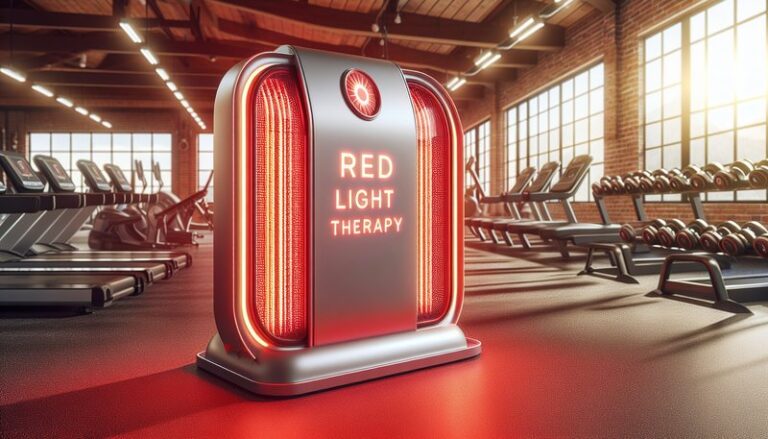Do Dermatologists Recommend Red Light Therapy?
Do Dermatologists Recommend Red Light Therapy?
Are you curious about red light therapy and its potential benefits for skin health? Many dermatologists are exploring this innovative treatment option that claims to enhance skin appearance and promote healing.
In this article, we will delve into what red light therapy is, the benefits it offers, and whether dermatologists endorse its use. We will also examine important considerations, alternatives, and frequently asked questions related to this therapy.
Key Takeaways
- Red light therapy is a non-invasive treatment that uses specific wavelengths of light to promote skin rejuvenation and healing.
- Dermatologists recognize the potential benefits of red light therapy for various skin conditions but recommend further research for comprehensive clinical guidelines.
- Patients should consider individual skin issues and consult healthcare professionals before starting red light therapy for effective and safe use.
What is Red Light Therapy?
Red light therapy (RLT) involves exposing the skin to low levels of red and near-infrared light. This process stimulates the skin cells, promoting cellular repair and potentially leading to various skin benefits.
RLT is often administered through LED devices or lasers. These devices emit light at specific wavelengths, primarily between 600 to 1000 nanometers, which are thought to penetrate the skin effectively, stimulating processes that can improve skin texture, reduce inflammation, and even promote collagen production.
For further reading Benefits of Red Light Therapy
What are the Benefits of Red Light Therapy?
Understanding the potential advantages of red light therapy can help in deciding whether to pursue this treatment. Below, we explore some of the notable benefits.
Stimulates Collagen Production
One of the primary benefits of red light therapy is its ability to stimulate collagen production. Collagen is essential for skin elasticity and firmness. Increased collagen levels can lead to a reduction in fine lines and wrinkles, resulting in a more youthful appearance.
Enhances Skin Healing
Red light therapy may improve wound healing and reduce scarring. Studies suggest that it can accelerate tissue repair by promoting the proliferation of skin cells and enhancing blood circulation, which nourishes the skin.
Reduces Inflammation and Redness
Individuals suffering from inflammatory skin conditions such as acne or rosacea may find relief from red light therapy. The therapy can reduce inflammation by modulating the immune response and minimizing redness in the skin, leading to a calmer complexion.
Improves Skin Tone and Texture
Patients often report improved overall skin tone and texture after undergoing red light therapy. The treatment can help diminish age spots, sun damage, and uneven pigmentation, resulting in a more uniform skin appearance.
Has Minimal Side Effects
Unlike more invasive treatments, red light therapy is non-invasive and generally considered safe. Most users experience minimal to no side effects, making it an appealing option for many individuals.
Is it Possible to Use Red Light Therapy at Home?
Yes, many products for red light therapy are available for home use, ranging from handheld devices to full-body light panels.
What are the Advantages of At-Home Red Light Therapy?
Using red light therapy devices at home has several advantages, including:
- Convenience: You can incorporate sessions into your daily routine without needing to visit a clinic.
- Cost-Effective: After the initial investment in a device, home therapy can be cheaper than repeated visits to a dermatologist or spa.
- Control Over Treatment: You can adjust the frequency and duration of your sessions according to personal preferences and skin needs.
What are the Disadvantages of At-Home Red Light Therapy?
Despite its benefits, there are some downsides to consider:
- Effectiveness Variability: Home devices may not be as powerful or effective as professional-grade equipment.
- Lack of Professional Guidance: Without professional oversight, there may be a higher risk of misuse or ineffectiveness in treatment.
- Time Commitment: Achieving noticeable results at home could take longer compared to professional treatments.
What are the Things to Consider Before Trying Red Light Therapy?
Before engaging in red light therapy, it’s essential to consider several factors to ensure a safe and effective experience.
Skin Type and Condition
Understanding your skin type and any underlying conditions is crucial. Some individuals may respond better to red light therapy than others, particularly if they have certain skin conditions that may complicate treatment.
Device Selection
If opting for home use, choosing a high-quality device designed specifically for red light therapy is vital. Research reputable brands and consult reviews or expert recommendations when selecting an appropriate device.
Consultation with a Dermatologist
Consulting with a dermatologist before beginning treatment can provide valuable insights tailored to your unique skin concerns and medical history. They can determine if red light therapy is a suitable option for you.
What are the Alternatives to Red Light Therapy?
If you’re considering skin treatments but aren’t sure about red light therapy, there are several alternatives you might explore.
Microdermabrasion
Microdermabrasion involves exfoliating the skin to remove dead skin cells, promoting cell turnover and revealing smoother, brighter skin underneath. This treatment can improve skin texture and minimize the appearance of scars.
Chemical Peels
Chemical peels use acids to exfoliate the skin, addressing various issues such as hyperpigmentation, fine lines, or uneven texture. They come in various strengths, allowing for customized treatment tailored to individual needs.
Laser Therapy
Laser treatments use precise beams of light to target specific skin concerns, including wrinkles, pigmentation issues, and vascular lesions. Various types of laser treatments are available, each designed for particular outcomes and skin types.
Conclusion: Is it Recommended to Use Red Light Therapy?
While dermatologists acknowledge the potential benefits of red light therapy for skin health, they often suggest that more research is needed for a comprehensive understanding of its clinical applications. For individuals seeking a non-invasive approach to improving skin appearance, red light therapy may be a beneficial option; however, it is essential to consider personal skin concerns, consult a healthcare professional, and weigh the pros and cons before proceeding.
Frequently Asked Questions
Is red light therapy safe for all skin types?
Generally, red light therapy is considered safe for most skin types. However, consulting a dermatologist is advisable if you have significant skin issues or concerns.
How long does each red light therapy session last?
Most sessions can last anywhere from 10 to 20 minutes, depending on the device used and the specific treatment goals.
See our comprehensive review Does Red Light Therapy Induce Diarrhea?
How often should I undergo red light therapy for optimal results?
For best results, many practitioners recommend starting with multiple sessions per week and gradually reducing frequency as desired. Consistency is crucial for achieving noticeable improvements.
Can I combine red light therapy with other skin treatments?
Yes, red light therapy can often be safely combined with treatments like microdermabrasion or chemical peels; however, professional guidance is recommended to tailor the regimen to your skin’s specific needs.
What should I do if I experience discomfort during treatment?
If you feel discomfort or adverse reactions during red light therapy, discontinue use immediately and consult a dermatologist for further evaluation.






